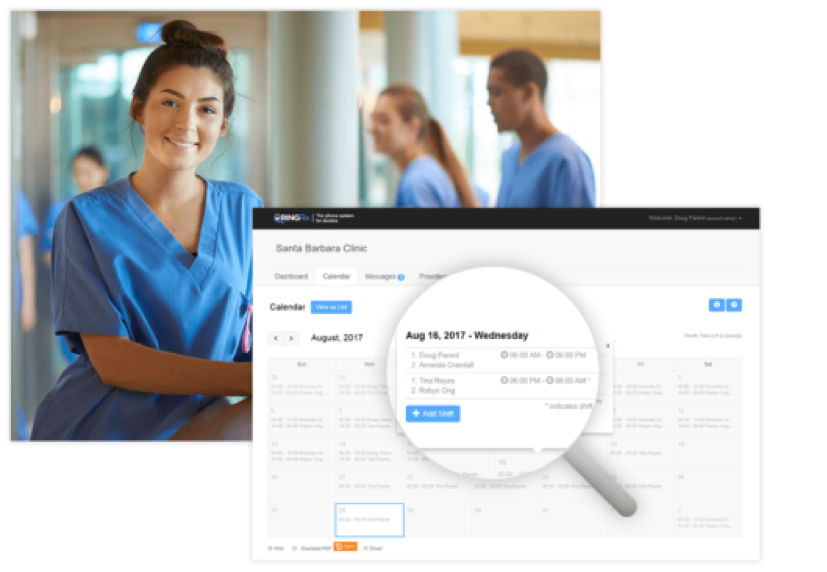How to Develop a Healthcare App

How to Develop a Healthcare App
Contributed ContentBuilding a healthcare app that’s successful can save lives. Make sure your healthcare app does its job by following these 6 steps to superior healthcare app development.
Updated October 12, 2023
What if I told you that almost half of the clients that walk into my office and want a custom healthcare app have been “radicalized” by the healthcare system in the USA and its healthcare providers?
It’s true: Most in search of building a custom healthcare application have been burned by the “other side” of healthcare in the USA – the bills, the lack of access to important health data, the waiting for consultations and medical records, and the exhausted healthcare professionals battling an increasingly high patient-to-physician ratio.
Ultimately though, this “radicalization” is resulting in innovation within the healthcare industry, and is likely a catalyst of the COVID-19 pandemic. Today, we are seeing these same clients build mobile health applications that deliver patient care into the hands of the people – literally.
But, that’s only half the battle. I recently learned that only 2% of these healthcare apps are actually being used by patients, which means that a lot of prospective e-health innovators aren’t fulfilling their dreams of improving healthcare or access to telemedicine in America.
Don’t worry: Whether you’re building for medical or hospital use, or for the average person looking to be proactive about self-care, there are a few steps in the development process you can take to make sure your app succeeds.
How to Succeed in Healthcare Mobile App Development
- Decide what type of e-health app you’re going to build
- Ask which function will best serve your target audience
- Complete your privacy and compliance research
- Choose which platforms for your medical app
- Make your UI/UX design accessible
- Find the best way to code your healthcare app
Step 1. Decide What Type of E-Health App You’re Going to Build
Before developing, you must decide where your idea fits within the e-health space and would well with medical professionals. Just look at the following list of things you could do with your healthcare app before putting it in the app store:
- Diagnosis chatbots
- Health trackers
- Mental health resources
- Wearable app features
- Mobile medication alerts & notifications
- Phone-to-text capabilities
- Geolocation or geofencing
- Artificial intelligence, machine learning & IoT features
With every item just as exciting as the next, it's easy to get lost trying to figure out where your idea fits into the bigger picture of healthcare services.
To clear through the fog and home in on exactly what type of application you’ll be starting with, familiarize yourself with the major types of healthcare apps:
Clinical assistance apps: These apps offer EMR and EHR access, including digital imaging abilities, the review of laboratory results and patient charts, as well as symptom checks and other assistance with personal data. They continually assist practitioners in offering in-hospital or in-office diagnoses for health conditions.
Scheduling and reminder apps: These apps help healthcare professionals complete appointment scheduling quickly and efficiently.

Users receive reminders about doctor appointments and prescription pick-ups as needed.
Telehealth and remote monitoring apps: These apps remotely transmit patient data and information to a provider in a different location. Practitioners and physicians are able to relay patient lifescan information, ECG viewing, and remote oxygen checks between devices. It is important for this health apps to have the best data security possible since a lot of health records contain confidential information.
Medical resource and education apps: These apps provide educational access to learning physicians or medical practitioners. Apps can include clinical references, study guides, educational games, or other drug-related information pertaining to their studies.
Health and lifestyle apps: These apps are typically personal in nature and often cater to a consumer market of users looking to track their personal health or fitness. Diet and fitness tracking and motivational or meditation apps fall into this category.
Consider the types of e-health apps and develop one that can fill a niche in the e-health space.
Step 2. Ask What Functions Will Best Serve Users
Once you decide what kind of app you want to build, you can start narrowing down the general functions you feel users in your market area will need. For instance, a medical resource app might not need a dashboard that aggregates different stats, but a clinical assistance or lifestyle app might.
Here are just a few of the functions users in your category might desire:
Dashboards: Healthcare app dashboards are useful for both solo practitioners and healthcare facilities to aggregate patient information all in one place easily. They improve clinical efficiency and administration.
Reporting and charting functions (analytics): Consider developing an app that accrues analytics information to review progress or monitor activity conveniently. Decreases reporting mistakes and improves the level of care.
Payment portal: Payment portals provide an easy way for remote patients to remit payment or for lifestyle users to purchase subscription packages or products.
Doctor profiles and geolocation: These are a quick way for prospective patients to find doctors near them, to review credentials, and, later, to use GPS to get to the clinic or medical facility where their doctor works.
Patient/user portal: Much like a dashboard, this is a patient-facing feature that allows patients to receive messages, alerts, and other reminders from their physician or mentor all in one place.
Real-time chat and video: These help patients connect with on-site physicians in case of emergency, or to discuss treatment options or diagnoses.
Step 3. Do Your Privacy and Compliance Research
Privacy is of the utmost importance when developing e-health apps. And unlike many other digital privacy and security concerns, healthcare apps are subject to fierce legislation in the name of patient and practitioner protection.
You will need to obtain certifications through the Health Insurance Portability and Accountability Act (HIPAA) that ensure patient protection.
With your app’s certification finalized, here are just a few of the extra steps you may take to further protect your patient-users:
- Weigh the security pros and cons between iOS and Android
- Add user passwords or other forms of user authentication
- Create an informative and accessible privacy policy for data protection
- Install and enable encryption on mobile devices
- Maintain updates to avoid network infections that compromise protected health information (PHI)
Now, your patient-users will be fully projected when using your health app.
Step 4. Decide Which Platforms and Devices to Support
Any e-health device must be supported on the correct platforms and operating systems.
Devices: Mobile devices such as smartphones, tablets, and smartwatches will provide users quick and instant accessibility to your health app.

Desktop devices such as desktop computers and laptops are useful for older app users and those performing more in-depth, time-intensive research.
Platforms: Although reaching the maximum amount of users is important – and doing so often requires building native applications in both iOS and Android – some clients have already looked into their existing analytics and have found that users prefer one platform over the other when it comes to mobile health apps or even fitness apps.
Step 5. Make Your UI/ UX Design Accessible
Effective user interface (UI) and user experience (UX) designs are important for all e-health apps. Given the vulnerability of many users who rely on e-health apps, it is important to do implement solid development practices:
- Focus on consistency when mapping out your user pathway.
- Spend some time considering your users' possible pain points to provide a seamless experience. Imagine being a patient who must enter their medical information every couple of hours. Patient monitoring is a key research component here.
- Minimize the number of “interaction” points for patient-users.
- Deliver important (in this case, patient health) information early in the user’s journey.
- Maintain simple, clean, and uncomplicated graphic app design.
Remember: great UI/ UX design isn’t only about making a great app, it’s about your software working well with the people and helping patients advocate for their own health journey.
Step 6. Find the Best Way to Code Your App
At this point in your healthcare journey, you should have established your market niche, considered which functions your users will benefit from, and have ensured the security and privacy of vulnerable populations through compliance and superior UI/ UX design. Now all that’s left to do is code and test your app in the app market.
Still, not everyone is a developer ready to build a custom app on their own. More often than not, entrepreneurs and organizations hire a development team they can outsource most of the software development and mobile application development work to.
Certainly, the right technical skills and experience are essential to healthcare app development, and an experienced team can improve the usability and credibility standards of your app. These are the people who are going to truly make your healthcare app successful, so make sure to ask the right questions before hiring.
Good questions to ask prospective healthcare app developers or a development team include:
- Have you built an app that required HIPAA compliance before?
- Do you know how to build apps that integrate with existing EHR/ EMR systems?
- Have you built an app that uses Apple Healthkit?
- What app features does your team specialize in?
- Why is building apps in the healthcare space so important to you and your team?
Remember that your health app is only as good as the way you code it. Whether you learn code yourself or outsource to an outside team with additional development costs, find the best way to code and program your mobile health app.
Develop a Medical App That Works for Customers
Mobile health apps have revolutionized the way we access our health information and manage our care. By providing users with more control, convenience, and access to reliable patient data, these apps can help improve overall health outcomes. With the continually advancing technology of healthcare apps, it is becoming increasingly easier for patients to receive timely and personalized care from their doctor or healthcare provider.
Following the six steps outlined will put you in control of building a health app that works for both doctors and patients.
Channel the frustration and radicalization of those in the American healthcare system to produce an app that works for your users and their well-being.
